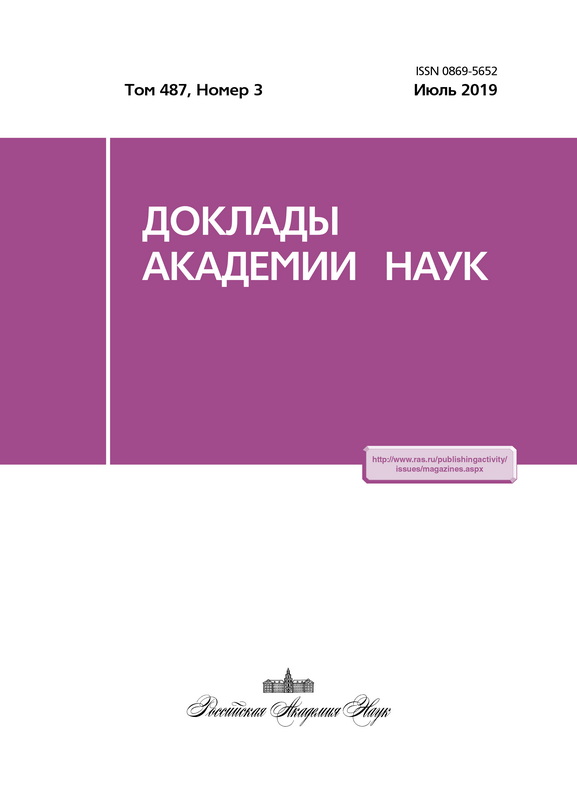Effect of zinc excess and low temperature on the IRT1 gene expression in the roots and leaves of barley
- Authors: Kaznina N.M.1, Titov A.F.1, Repkina N.S.1, Batova Y.V.1
-
Affiliations:
- Institute of Biology of the Karelian Research Centre of the Russian Academy of Sciences
- Issue: Vol 487, No 3 (2019)
- Pages: 333-337
- Section: Biochemistry, biophysics, molecular biology
- URL: https://journals.eco-vector.com/0869-5652/article/view/15726
- DOI: https://doi.org/10.31857/S0869-56524873333-337
- ID: 15726
Cite item
Abstract
We studied the effect of zinc excess (1000 µM) and low temperature (4 °C) on the IRT1 gene expression in barley roots and leaves. Exposure at each of the stress factors separately, induced an increase in the content of the HvIRT1 gene transcripts, more pronounced in the leaves. At the same time, growth of seedlings continued. Under the combined action of factors in the first 3 days, the amount of mRNA also increased, but after 7 days of exposure it significantly declined, which corresponded with a complete inhibition of seedlings growth. It is assumed that the seedlings growth inhibition under the combined effect of the zinc excess and low temperature is associated with a decrease in the transcriptional activity of the HvIRT1 gene, due to the deficiency of a number of trace elements under these conditions.
Keywords
About the authors
N. M. Kaznina
Institute of Biology of the Karelian Research Centre of the Russian Academy of Sciences
Author for correspondence.
Email: kaznina@krc.karelia.ru
Russian Federation, 11, Pushkinskaya str., Petrozavodsk, 185910
A. F. Titov
Institute of Biology of the Karelian Research Centre of the Russian Academy of Sciences
Email: kaznina@krc.karelia.ru
Corresponding Member of the Russian Academy of Sciences
Russian Federation, 11, Pushkinskaya str., Petrozavodsk, 185910N. S. Repkina
Institute of Biology of the Karelian Research Centre of the Russian Academy of Sciences
Email: kaznina@krc.karelia.ru
Russian Federation, 11, Pushkinskaya str., Petrozavodsk, 185910
Yu. V. Batova
Institute of Biology of the Karelian Research Centre of the Russian Academy of Sciences
Email: kaznina@krc.karelia.ru
Russian Federation, 11, Pushkinskaya str., Petrozavodsk, 185910
References
- Broadley M. R., White P. J., Hammond J. P., et al. Zinc in Plants // New Phytol. 2007. V. 173. P. 677-702.
- Казнина Н. М., Батова Ю. В., Лайдинен Г. Ф. и др. // Тр. КарНЦ РАН. Сер. Эксперим. биология. 2017. № 12. С. 118-124.
- Palmer G. M., Guerinot M. L. // Nature Chem. Biol. 2009. V. 5. P. 333-340.
- Guerinot M. L. // Biochim. Biophys. Acta. 2000. V. 1465. P. 190-198.
- Pedas P., Ytting C. K., Fuglsang A. T., et. al. // Plant Physiol. 2008. V. 148. P. 455-466.
- Lee S., An G. // Plant, Cell and Environ. 2009. V. 32. P. 408-416.
- Connolly E. L., Fett J. P., Guerinot M.L. // Plant Cell. 2002. V. 14. P. 1347-1357.
- Hacisalihoglu G., Hart J. J., Kochian L. V. // Plant Physiol. 2001. V. 125. P. 456-463.
- Livak K. J., Thomas D., Schmittgen T. D. // Methods. 2001.V. 25. P. 402-408.
- Титов А. Ф., Таланова В. В., Казнина Н. М. и др. Устойчивость растений к тяжелым металлам. Петрозаводск: КарНЦ РАН, 2007. 172 с.
- Серегин И. В., Кожевникова А. Д., Грачева В. В. и др. // Физиология растений. 2011. Т. 58. С. 85-94.
- Битюцкий Н. П. Необходимые микроэлементы растений: Учебник. СПб.: ДЕАН, 2005. 256 с.
- Marschner H. Mineral Nutrition of Higher Plants. L.: Acad. Press, 1995. 889 p.
- Fukao Y., Ferjani A., Tomioka R., et al. // Plant Physiol. 2011. V. 155. P. 1893-1907.
- Grotz N., Fox T., Connolly E., et al. // Proc. Natl. Acad. Sci. USA. 1998. V. 95. P. 7220-7224.
Supplementary files







